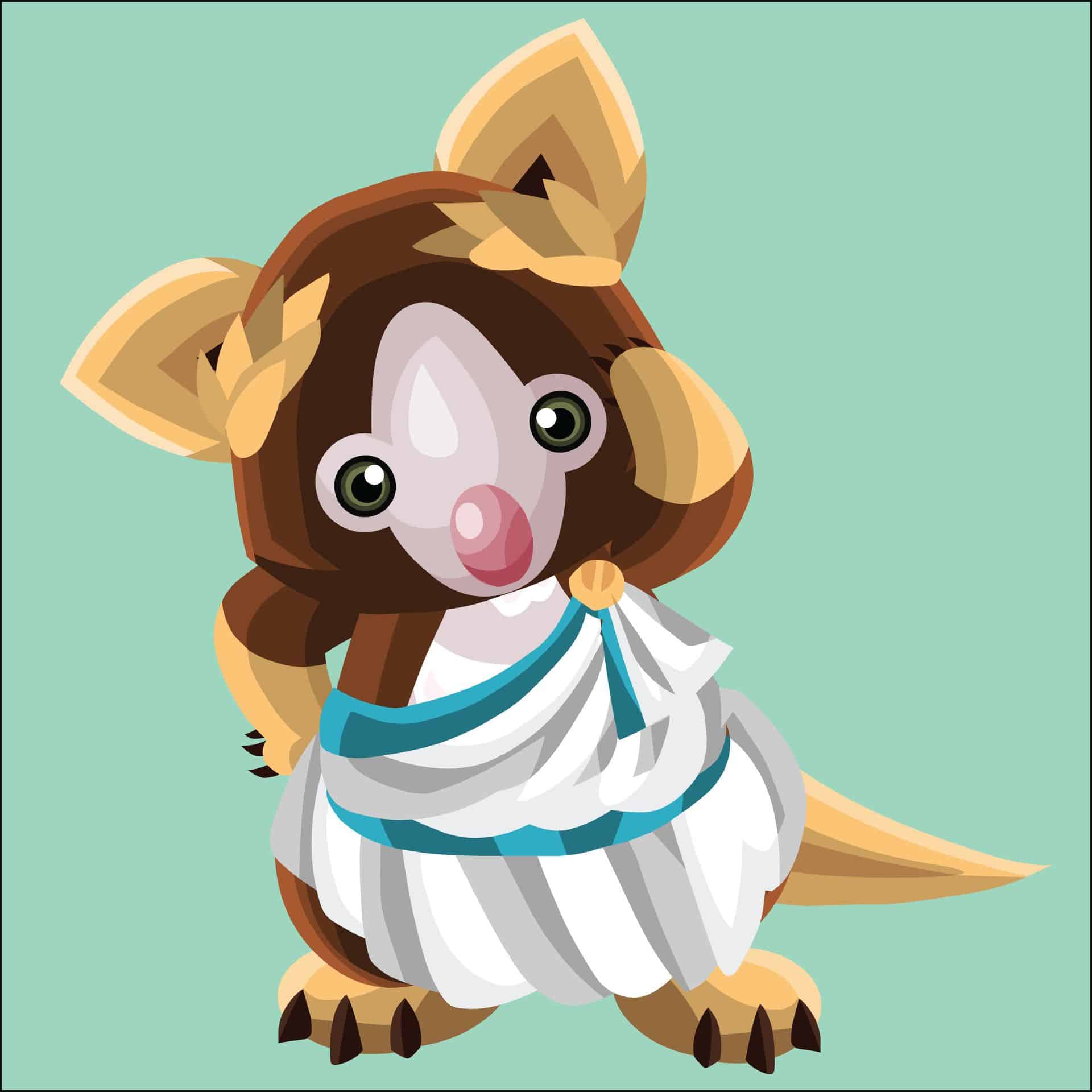Top 3 Athena’s Statue Magnificent Sides

Updated On: November 08, 2023 by Ciaran Connolly
Why hello there! Can we perhaps interest you in a Greek tour? If you are a Roman and Greek history fan, then this article is probably for you. We will be discussing a huge monument and the story behind it.
Well then, do you by any chance know the Olympian gods? If you do not or are not sure, it is okay, we will go over them, explain them concerning the monument we are discussing, and shed light on one particular Olympian goddess that greatly relates to this monument.
You probably guessed by now! However, no, it is not Zeus’ statue. I mean this is not this kind of story and Hercules won’t be able to make it today. So, Athena will have to fill in. Yup, you heard it! Athena, the statue of Athena is our monument for the day!
Before we get right down to business and start talking about the statue of Athena, we want to tell you some Greek tales about Athena. So, we hope you are still interested because this is the part we ask you to get ready for some action!
Athena was a Gemini
Athena, my friend, is a Greek Olympian goddess if it is not obvious by now. She is the goddess of not only wisdom but also war. Yes, she was certainly a Gemini. You know how a Gemini can be.
Many people with the Gemini zodiac sign have erratic mood swings that drive them from one emotional or mental pole to the exact opposite just like that. They are probably used to having such splitting experiences.
It is not just a guess, this has been proven by very scientific facts and research, so trust me when I tell you. A Gemini is an air sign and will always find a way to think their way out of situations.
There is no wonder Athena is the goddess of handicrafts, war, and practical reasons. She is like the city- protector in the Greek religion. Originally, she was urban and civilized. She is a virgin deity. That is why some may know her as Athena Parthenos.
The statue of Athena Parthenos
Parthenos means virgin. The statue is known as the statue of Athena Parthenos. It is a sculpture by Phidias. We will tell you more about Phidias and Athena in a moment, but first, you should know where the statue is.
The statue of Athena Parthenos was a magnificent monument. It was a monumental chryselephantine sculpture. That was made by the goddess, Athena. It is dated back to the mid-fifth century BCE. It was an offering. Given from the city of Athens to its deity.
Notice we used the verb ‘was’ that is because it is no longer existent. According to World History, the cult statue, begun in 447 BCE and dedicated in 438 BCE, would remain the great city’s symbol for a thousand years.
That is until, in Late Antiquity, it disappeared from the historical record just like that. They assume that it was possibly taken to Constantinople and that is where it was later destroyed. So, sadly, we cannot tell you the exact location of the statue.
That is because it is either destroyed, disappeared, or maybe because we are simply not sure ourselves. However, it was not long enough until another statue appeared and continued to tell the story of the statue of Athena the Parthenos.
Before we tell you all about that, we just want to remind you that Athena was believed to be the goddess of war, civilization, justice, strategy, arts, and skill. Just in case you are wondering why bother building a whole statue in her honour?
Known as the Varvakeion Athena, it was a Roman-era statue. That was made by Athena Parthenos. It is considered to be the most faithful reproduction of the chryselephantine statue made by Phidias and his assistants. It is also made by Phidias.
It can be found as a part of the collection of the National Archaeological Museum of Athens. However, just because that statue belongs to the Roman era, Athena should not be confused with Minerva.
Minerva was the Roman goddess of many things. Some of those are; handicrafts and professions as well as arts and war. She was somehow similar to the Greek goddess, Athena. However, Minerva is the Roman goddess while Athena is the Greek goddess.
Parthenos and Parthenon
There are so many Greek histories out there to share with the world, but we precisely picked this for you:
Let alone Athena being the main star of this article. Athena Parthenos should not be confused with Athena Parthenon as well. Parthenon is “the temple of the virgin goddess.” While Parthenos means virgin.
Parthenos was a quality that the Greeks bestowed upon many goddesses just like Athena. Parthenon, on the other hand, is a Doric temple of Athena that was built on the acropolis at Athens in the fifth century B.C.
The statue itself is called the statue of Athena or the statue of Athena Parthenos. Parthenon is quite the big deal. It was a symbol of the power, wealth, and civilized culture of Athens. It was one of the most extravagant and largest of the Greek temples.
It still exists to our present-day and it is considered and recognized as one of the most enduring buildings to reflect the symbol of Ancient Greece. So, now you know all there is to know about the statue of Athena Parthenos (Athena the virgin).
Let us tell you a bit more about the artist who sculptured the statue itself. Or even about Athena and learn all there is to know about her stories. You know what? We will do both! However, one should come first and they are both equally interesting to hear about.
So, there is only one thing we can do to help us decide and that is our lucky coin! Let us assume Athena is the head and Phidias is the tail. Do you choose heads or tails? Regardless, we choose heads. Let us toss the coin and see how it goes!

Athena
We have genuinely tossed the coin and the result was head. The reason why we chose Athena as the head is that according to the chronological order, the goddess came first as an idea or belief and Phidias was born into the era; the era that believed in the goddess Athena.
If you tossed your coin and it turned out otherwise, then just assume we chose Athena as the tails because our topic is still Athena. So, let us start. Athena is a very interesting goddess with an even more interesting backstory.
You can learn more about the Egyptian gods as well, not only the Greeks, exclusively on Learning Mole. Which, by the way, is a very informative and rich site. You will never run out of topics and stories to learn about.

She is known as the mighty daughter of Zeus. Zeus’s parents are Cronus and Rhea. In Greek religion, Cronus was the Titan God of the harvest, agriculture, vegetation, fertility, the ages and the destructive forces of time, and the King of the Titans.
Cronus was also known as Father Time. He was the son of Gaia and Uranus in Greek mythology. His wife, Titaness Rhea, is an ancient goddess of the Greek religion who dates back to the pre- Hellenic.
She was worshipped throughout the Greek world. She was related to fruitfulness and known for her affinity with Gaea (Earth) and the Great Mother of the Gods. The Great Mother of the Gods is also known as Cybele.
Zeus along with his brothers and sisters overthrew their Father. Those are Hestia, Hades, Hera, Poseidon, Demeter, and Chiron. Zeus, Poseidon, and Hades then, drew lots and Zeus won the draw becoming the supreme ruler of the gods. Zeus or should I say lord of the sky is the rain god.
Poseidon became the god of the ocean and Hades the god of the underworld. It is said that Zeus had about seven wives. His first was Oceanid Metis, whom he swallowed. Metis is also known as the mother of Athena in some versions of the story. He swallowed Metis upon the advice of Gaia and Uranus. As he was foretold that a son by his from Metis would eventually overthrow him. So, to prevent the prophecy, he swallowed her. However, later, their daughter was born from the forehead of Zeus.
Exactly! That is Athena. Metis is said to be a nymph in some versions of the story and is known as a Titaness in others. In another version of the story, Metis was the daughter of Oceanus and Tethys, thus one of many Oceanids and cousins to the Titans.
Metis was the wisdom in itself. Not only that but also the first wife of Zeus. Zeus loved Metis greatly. He even relied on her wisdom in almost everything. However, a prophecy warned Zeus. A male child by Metis would rise to dethrone him as the King of the Gods.
So, repeating the behaviour of his father, Zeus swallowed Metis whole. As an immortal, Metis continued to exist, and within Zeus’ mind, she continued to offer wise counsel. There was just one problem.
Metis was already pregnant then. Now the child, which is born of wisdom and power, insisted on being born! This manifested, literally, as a massive headache for Zeus! Zeus was miserable because of those headaches. So, Hermes took one of Hephaestion’s axes and drove it right into Zeus’ head. Instantly, the goddess of wisdom and strategy, Athena, was born, fully grown and dressed for battle.
As Zeus’ child, Athena had many what you may call half-siblings, such as Ares by Hera, Apollo by Leto, Aphrodite by Dione, and many more.
Some say Athena had 15 siblings in total. Others believe she had non as full- siblings. While others are convinced she had many more. Some even believe Athena was produced without a mother but emerged from Zeus’ forehead.
Athena’s husband is Hephaestus. However, Athena was immune to romantic love. I mean that is the goddess of wisdom we are talking about. Athena always chose to fight with two swords. However, in Greek mythology, she used a spear and a shield.
Phidias

We told so many tales about Athena, it is high- time we spoke of Phidias; the talented artist, his life, and his works. Phidias or as some may know him as Pheidias was a Greek sculptor. He was not only a sculptor.
He was a painter. He did not only earn the title of a painter but the title of an architect as well. Some people consider his works to be a prodigy. And so, the statue of Zeus at Olympia, which is his, became one of the Seven Wonders. Not any seven other than those of the Ancient World. Among others that we will speak of in much more detail in another article exclusively on Connolly Cove.
So, stay tuned. Phidias was renowned for his hugely massive chryselephantine statues. Sadly, none remained to our present day. Some were destroyed. Others merely did not survive nature’s course of events.
Some of his creations were the chryselephantine cult statue of Zeus for the cella in the Temple of Zeus at Olympia and Athena in the Parthenon. Those creations are known through other mini copies that are completed on a much smaller scale.
Phidias was quite talented when it came to sculpturing. He was not only a sculptor in bronze or marble, but in many other difficult techniques of designing and assembling gold, ivory, and wooden components into his chryselephantine statues.
It was believed that Phidias died in prison because of being accused of stealing gold from the statue of the Athena Pantheons in 432. However, the charge was disproved. Then, he was accused of impiety.
That was since he included portraits of Pericles and himself on the shield of Athena on the Athena Parthenos. That is said to be the reason he was thrown into prison. However, it was recently discovered, that he may have not died in prison.
Instead, it is believed that he was exiled to Elis and that is where he worked on the Olympian Zeus. The statue was sadly destroyed. That happened when Emperor Theodosius II banned the games in 426. Not only that, but he also closed the temple.
However, that can be considered one side of the story. It is believed that the statue was dismantled and transported to Constantinople. That is where it was reportedly burned. In reality, however, there is no way of knowing the truth behind the destruction of the statue.
All we know is the fact that it was destroyed and that it no longer exists. Phidias was able to create some of the most beautiful works of the high classical period for us to remember. He adopted the idealistic and classical style that distinguished Greek art in the late 5th century BCE.
Finale
Now we have come to the end of our journey, but there are more stories to tell on Connolly Cove just waiting for you to check out. Athena is not the only goddess out there. There are more Roman and Greek gods and goddesses that have stories to be told.
We learned all about Athena; the fact she was a Gemini; the history behind the statue of Athena; the background story of her birth and her family connections; the tales told about Athena and the creator of the legendary statue.
Make sure you keep visiting Connolly Cove to find out more of these stories if you are interested in travelling or even to check in with us. The stories never end and so will our adventures.






